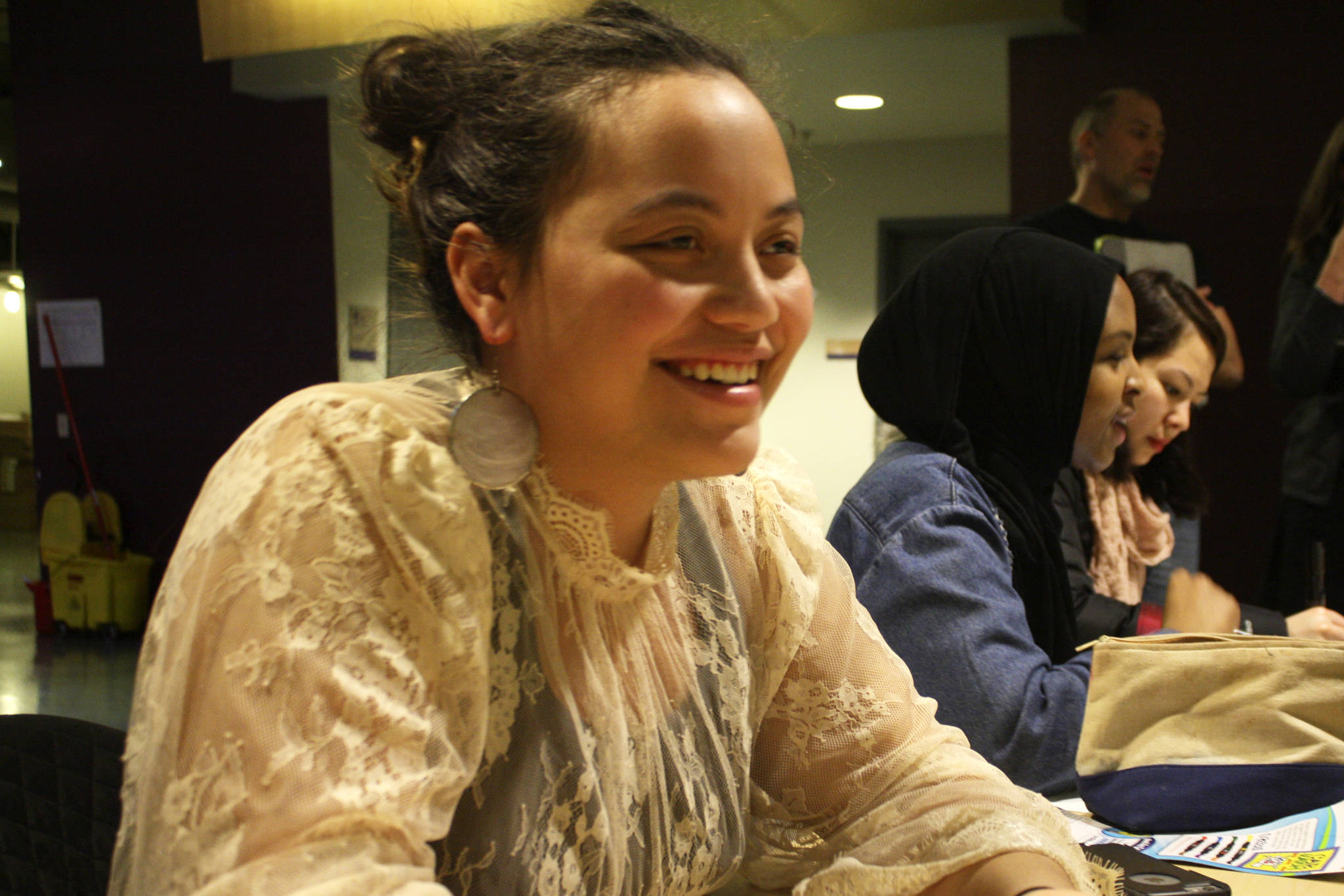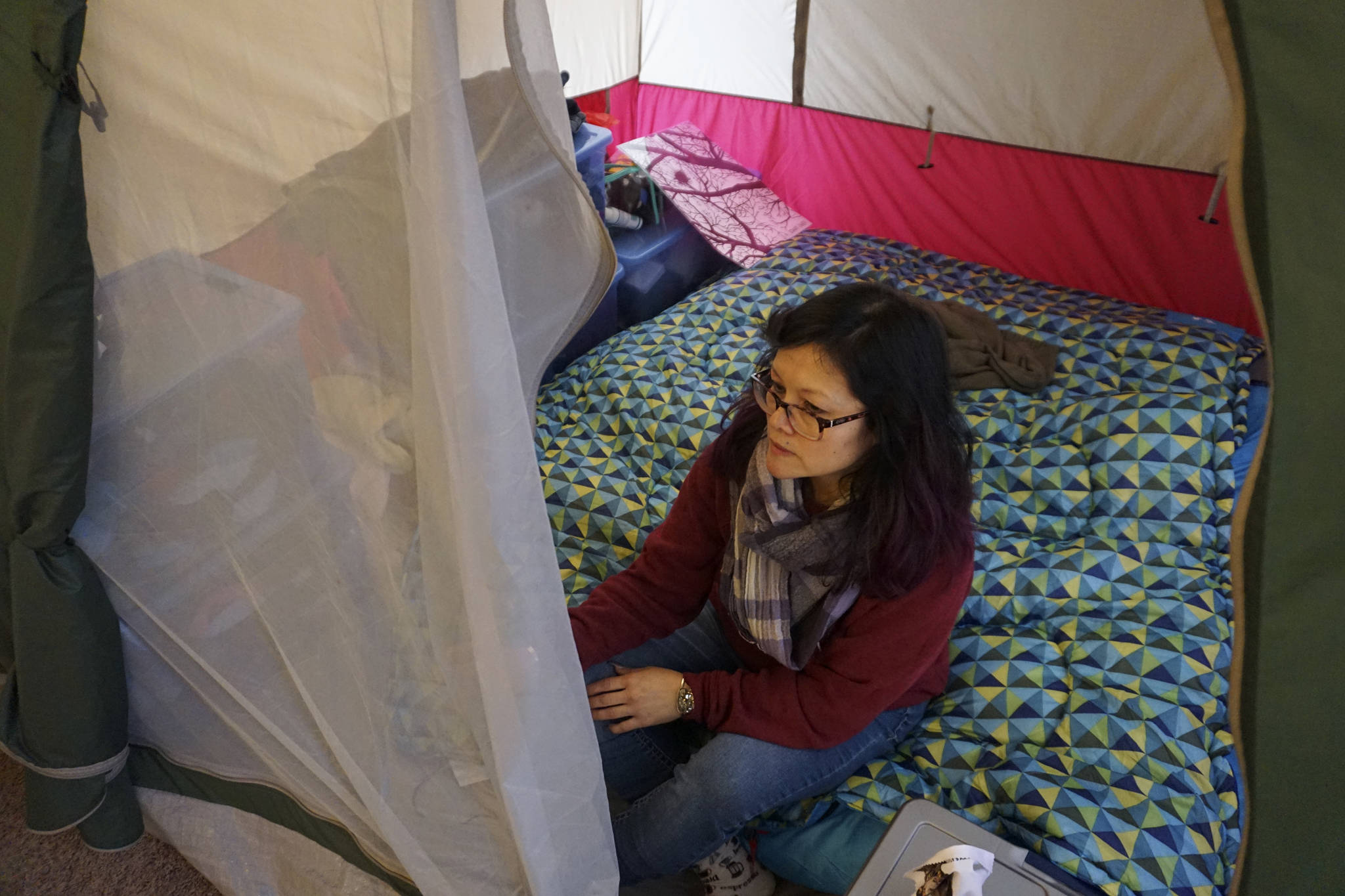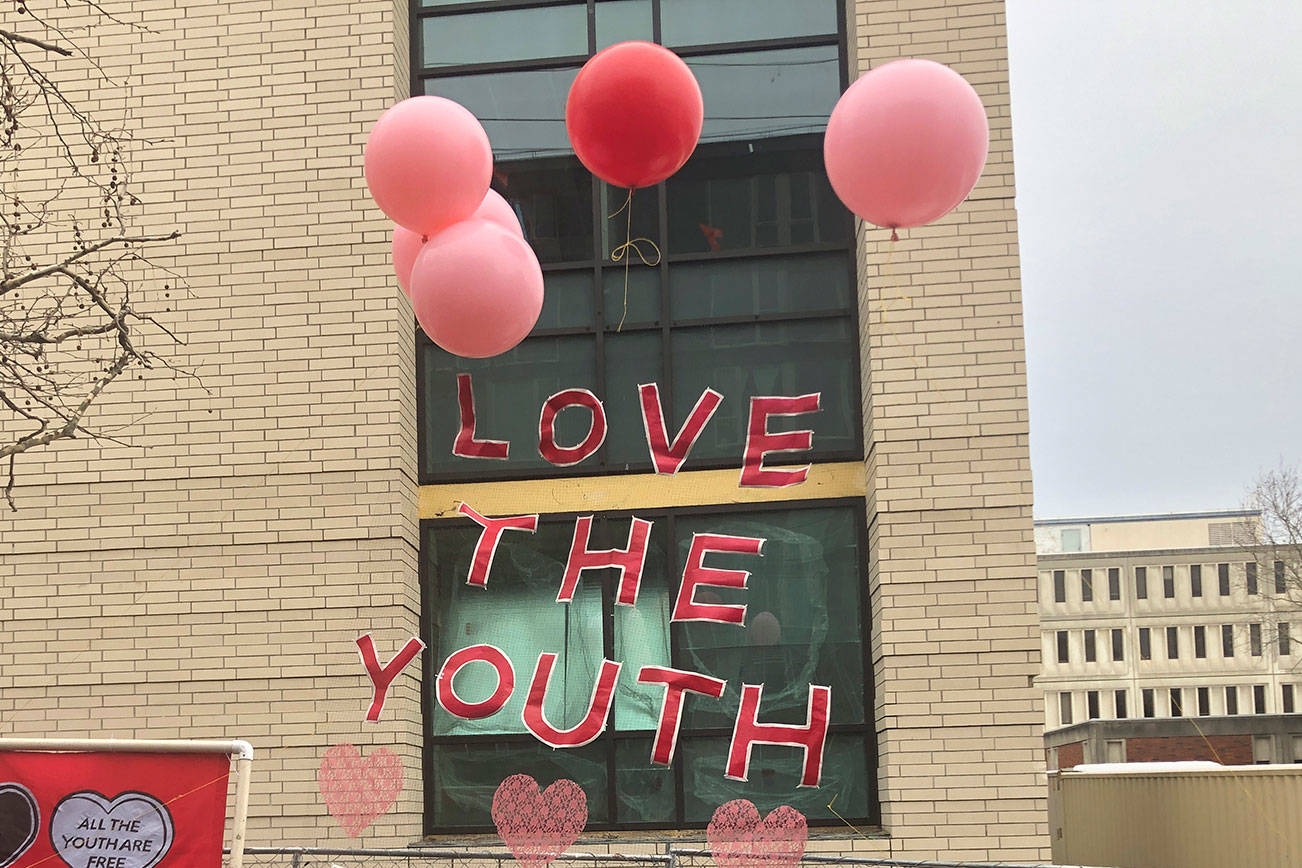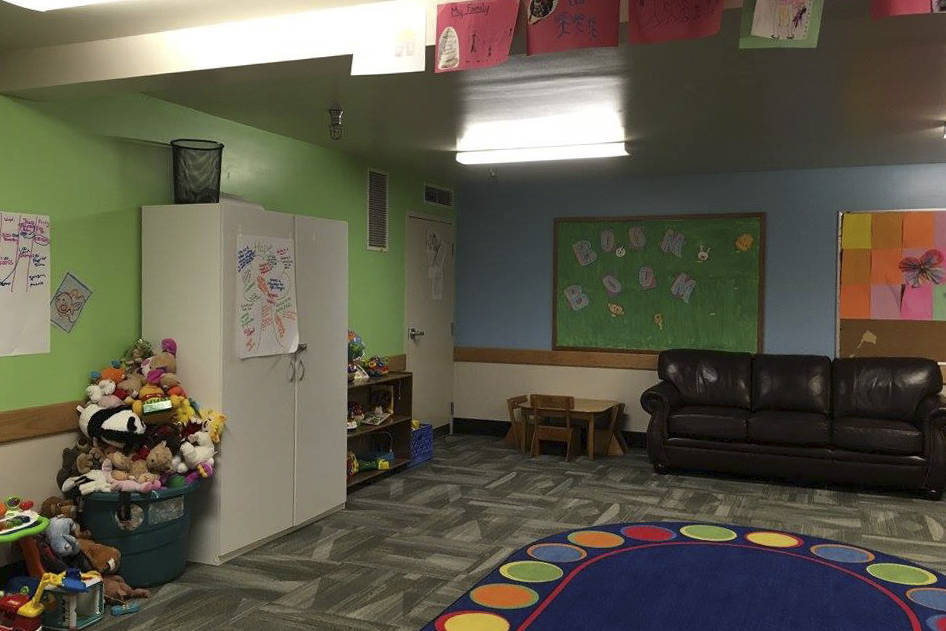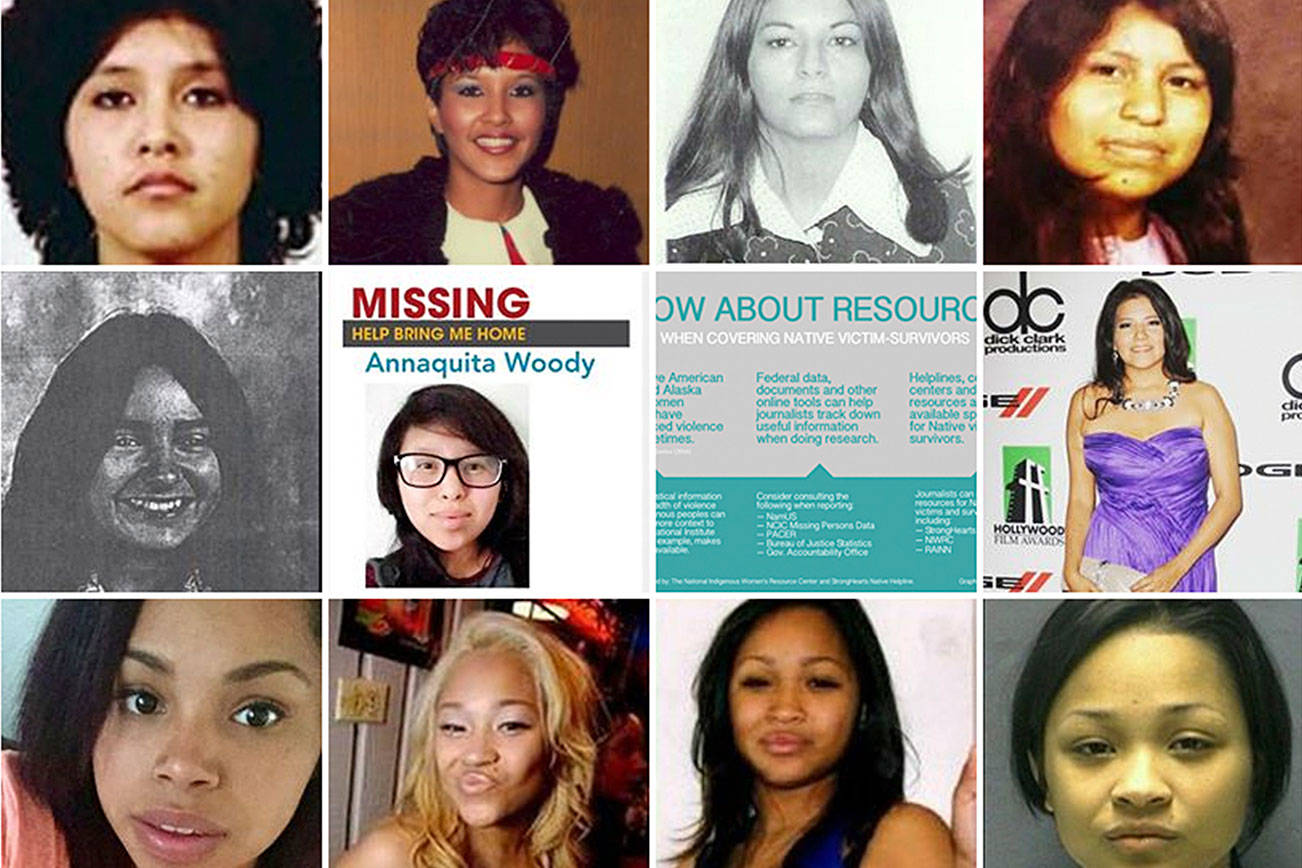The public comments section of the Seattle School Board’s Jan. 31 meeting was proceeding with usual promptitude, when a parent advocating for advanced coursework opportunities throughout the district announced he would cede the remainder of his speaking time to West Seattle High School senior, Makhari Dysart.
Dysart strode up to the podium as a few other NAACP Youth Coalition members gathered behind her holding handmade Black Lives Matter posters. “Taking the initiative to endorse the Black Lives Matter resolution is a great start to supporting students of color,” Dysart, a half-black and half-white 17-year-old, said as she tucked her curly hair behind one ear. Pausing for a breath, she continued, “But I must emphasize it is only a start.” Her speech was punctuated with data about racial disparities in education, and emphasized the need to train staff on racial equity and make an ethnic studies curriculum mandatory throughout the district. “I’ve witnessed too many students be singled out and targeted by teachers, and I’ve witnessed too many people fall through the system,” Dysart told the School Board. “It is time for not just endorsements, but for policy. And the NAACP Youth Coalition have plenty of ideas,” Dysart said, receiving a round of applause. Following Dysart, Ballard High School sophomore Aneesa Roidad urged the district to acknowledge “that black lives matter, and that the lives of students of color matter.”
And this time the School Board listened. That evening, the directors passed a resolution encouraging district-wide participation in a Black Lives Matter at School week of action from Feb. 5-9. This week, educators throughout the district will teach lessons about black history and institutional racism—discussion topics that Dysart and other coalition members say Seattle Public Schools (SPS) teachers usually avoid. Disregarding racial inequities in education can have devastating effects for youth of color, the students argue. An SPS report from last school year showed that the district’s black students graduate at lower rates than white students and are also suspended at seven times the rate of white and Asian students. The coalition formed last fall, with the help of the Seattle King County NAACP, to advocate for students of color and to demand that they be offered a seat at the table when district-wide policy changes are made. “If adults can’t do it, we’re going to do it,” Dysart told Seattle Weekly.
As a first step in recognizing the students’ efforts, SPS Board Director Zachary DeWolf—the resolution’s main sponsor—dovetailed his approval of the Black Lives Matter resolution with comments about the students’ testimony. “This is just step one in a process of making sure that we’re elevating their voice,” DeWolf said towards the end of last week’s meeting. “I think that we have … an opportunity to have a really critical relationship with them in helping us to make sure that we’re held accountable and also doing things in the best interest of our students of color and historically marginalized populations.”
In October 2016, Seattle’s Social Equality Educators—a group of union teachers and school staff—organized the first Black Lives Matter at School day, where about 3,000 educators wore Black Lives Matter shirts while they taught lessons about systemic racism. The event catalyzed schools in Washington, D.C., Los Angeles, Detroit, Philadelphia, and elsewhere to also join in the coordinated week of action this year. Yet the NAACP Youth Coalition wanted more. The coalition members were dissatisfied with Seattle Superintendent Larry Nyland’s reticence to declare that Black Lives Matter last year, instead opting for the more neutral language of “eliminating the opportunity gaps” between races. In their eyes, a Black Lives Matter resolution would affirm that they and other students of color are seen and valued in schools.
As Nyland’s contract is set to expire in June, the coalition also wants students to be included in the search for his replacement. Along with the demands that they shared during the School Board meeting, the coalition also desires the district to add student representatives to the Board, implement restorative justice practices districtwide, and create a streamlined process for students to report race-related incidents with appropriate consequences.
In a school district that is nearly 50 percent white—with a youth of color population that is steadily declining according to 2016 SPS data—many of the coalition members were drawn to the group because of a prevalence of micro-aggressions and no official avenue to address them. During their first meeting at The Center School last November, about 10 students from different schools shared their experiences as youth of color. They fluidly recited stories that spanned back years, flipping through a Rolodex of trauma that they didn’t realize they were holding onto. “That’s when we learned, ‘Oh my gosh, all the things I’m experiencing they are too!’ ” Dysart said, recalling the electricity of the first meeting. “This isn’t an issue that’s just me. This is a systemic issue that needs to be addressed and that isn’t.”
Dysart told personal stories about people touching her hair without asking for permission, and the countless times she’d overheard non-black high school students calling each other the N-word. Others spoke of being sent to the principal’s office for talking too much when they were in elementary school, while their white peers didn’t face similar disciplinary actions. Roidad said she hasn’t experienced any acts of racism in the district, since she just moved to Seattle from the suburbs of Philadelphia this school year, but the discussion helped her pinpoint moments throughout her life that had previously gone unnoticed. She recalls being ridiculed for her Pakistani origins when people would ask “why I had hair on my arms, why I looked different from them, why some of the food I ate smelled weird and looked weird.”
Other complaints concern more recent incidents. Ha’aheo Auwae-Dekker, a mixed-race Pacific Islander and senior at The Center School, spoke of being tokenized in school. They decided to join the coalition because the micro-aggressions finally had taken a toll on them by their last year of high school. “I can’t just sit around and feel angry. I’m the kind of person that needs to feel angry and do something about it,” they said.
An incident which occurred at The Center School on Jan. 9 underscored how unsafe some students of color feel at school and highlighted the district’s reticence to address race-related issues. According to Auwae-Dekker, they and coalition member Laila Mohamud had invited former City Councilmember Kirsten Harris-Talley to discuss local activism, and planned on facilitating a larger discussion about racism as part of a Martin Luther King Jr. Day assembly at The Center School. They arranged a panel of students of color to talk about their experiences and field questions submitted by other students. Auwae-Dekker and Mohamud distributed a Google Forms survey for people to anonymously list their questions a few days before the event. While some of the comments they received were thoughtful, the survey was immediately inundated with overtly racist remarks including “hail Neo-Nazis” and “people of color should die.” Auwae-Dekker and Mohamud were disheartened, but determined to continue with the assembly.
On the day of the event, the panelists and Councilmember Harris-Talley were prepared to speak, while the rest of the student body took their seats in the audience. As Auwae-Dekker approached the stage to introduce the speakers, a classmate informed them that the school had received a shooting threat. “And that was really scary, because no one was talking to us about it,” Auwae-Dekker recalled. The event was cancelled, and Auwae-Dekker returned to the lobby crying and fearing for their safety. “It felt so real that somebody could do that, especially after the [Google Forms survey] comments that we got on that Friday,” Auwae-Dekker said, adding that the school administration never followed up with them about the incident and just rescheduled the event for February. After weeks of being left in the dark, they marched into Principal Dr. Barbara Casey’s office to inquire about the incident and was told that it was simply a miscommunication sparked by one The Center School student who overheard that someone had brought a gun to Ballard High School that same day. SPS spokesperson Kim Schmanke said in a Friday email to Seattle Weekly that “The Center School principal says she wasn’t aware of the NAACP Youth Coalition event or incident that would have cancelled it.”
Although the NAACP Youth Coalition is student-led, they’ve received support from some educators and youth organizers throughout the past few months. Seattle King County NAACP Education Chair Rita Green has helped the coalition get off the ground through her efforts to bring an ethnic studies curriculum before the School Board. In the process of speaking with students of color beginning in 2015, she heard from many students who contended that their history and culture was ignored in their school’s curriculum, and that their input was consistently absent from decision-making processes. The NAACP has a long history of facilitating youth councils, including ones that were instrumental in holding demonstrations and sit-ins during the civil rights movement. “One of the biggest complaints that they have said is that all these decisions are being made about us and we’re not even at the table to have a say,” Green said.
Jon Greenberg, a language arts and social studies teacher at The Center School, was also frustrated by the lack of student input in curriculum creation and district policies. Throughout the years, he’s seen students of color receive micro-aggressions and overtly racist comments. “As an educator, I’d say that the district response to some of these egregious disparities seems slow and that seems problematic,” he said. Greenberg, who is piloting the ethnic studies curriculum, attends the coalition’s meetings to take notes, offer them advice, and help them send out emails.
Prior to speaking in front of the School Board at last week’s meeting, seven coalition members sat around a long table situated in front of a large cut-out of a tree plastered to the wall. They politely took turns speaking, raising their hands, and inviting each other to speak. As students passed around snacks, they discussed launching a hashtag during the Black Lives Matter week of action and shared challenges that they came across while encouraging their teachers to have race discussions in classrooms. Roidad piped up to say that her teacher wanted to ask students softball questions like, “Where is your family from?” She considered that “her avoiding the actual issues that are going on, which is not okay.” As one of the only underclassmen in the group, Roidad is hopeful that the coalition’s actions will help other youth of color feel safer and more supported in the community.
Although most of the coalition members are seniors, they plan on recruiting more underclassmen and anticipate that their legacy will continue after they graduate. Auwae-Dekker hopes that their younger sister, who will soon enter middle school, will reap the benefits of the coalition’s actions for the remainder of her SPS education. “I’m hoping that through the NAACP Youth Coalition—and with whatever actions we take in the future—that students will recognize that … things can be accomplished.”
mhellmann@seattleweekly.com
This story has been updated to reflect Ha’aheo Auwae-Dekker’s preferred gender pronouns.
